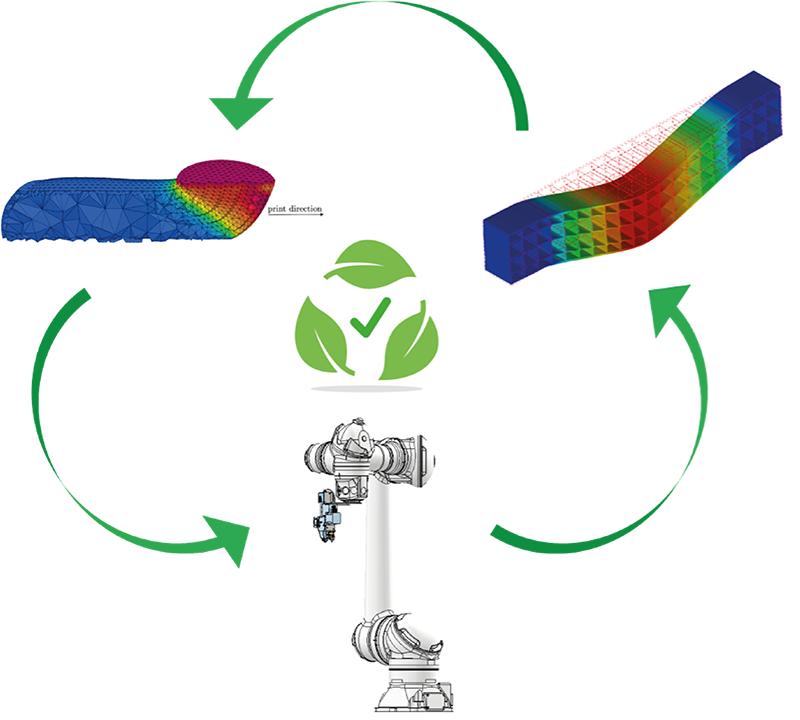The CORERAM project aims to achieve technological validation in a laboratory environment of modeling and computational simulation techniques (digital twin) related to:
The project also includes the simulation and creation of a technological demonstrator for Robotic Additive Manufacturing (RAM), which will serve as a scalable and flexible hub for the future development of sustainable structural sandwich panel cores.
The image was produced by SITUS using currently available project data. Since CFD simulation data are still in development, the top left image was taken from the open access article:
“Numerical simulation of the extrusion and layer deposition processes in 3D concrete printing with the Particle Finite Element Method”, Rizzieri et al.
https://doi.org/10.1007/s00466-023-02367-y

The current industrial landscape is witnessing a growing demand for sustainable and customized solutions, aligned with European green transition policies. In this context, the integration of key enabling technologies—such as additive manufacturing, flexible robotic processes, and advanced simulation methods (digital twins)—represents a strategic approach to accelerate the industrial adoption of innovative materials and processes.
The CORERAM project specifically aims to leverage this approach to accelerate the development of lightweight and sustainable structures, such as structurally efficient sandwich panel cores made from biocompatible materials.
The main objective of CORERAM is to assess the extent to which validated virtual simulation environments (digital twins) can support the efficient development of innovative additive manufacturing processes for creating eco-sustainable structural sandwich panel cores.
These structural solutions will be composed of natural-origin thermoplastic polymers and related composites, manufactured through flexible robotic additive manufacturing (RAM) processes.
The project includes the development and validation of the following simulation environments:
All efforts aim to enable "First Time Right" development of sustainable processes and components.
KEY FIGURES

RESEARCHERS INVOLVED

RESEARCH HOURS

PROJECT DURATION

NUMBER OF WORK PACKAGES (WPS)

STARTING TRL

FINAL TRL